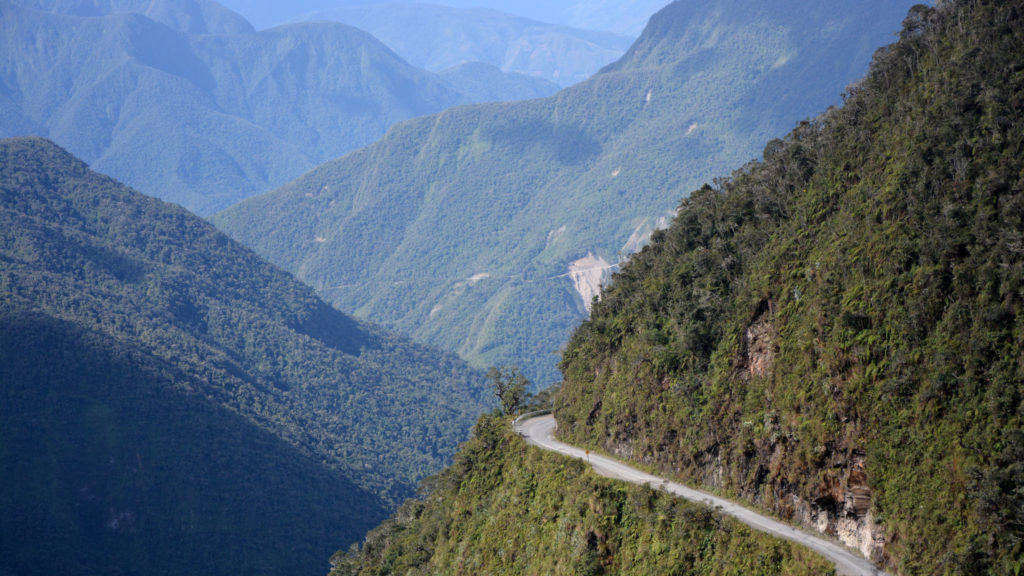
The Death Highway Cycling Experience – La Paz, Bolivia, is an experience that will mark a before and after in your life. This adventure is only for the bravest, adrenaline lovers, the extreme, those who fear nothing. Take a good breath of air and start pedaling down the mountain while the breeze hits your face and the huge void just a couple of meters defies you.
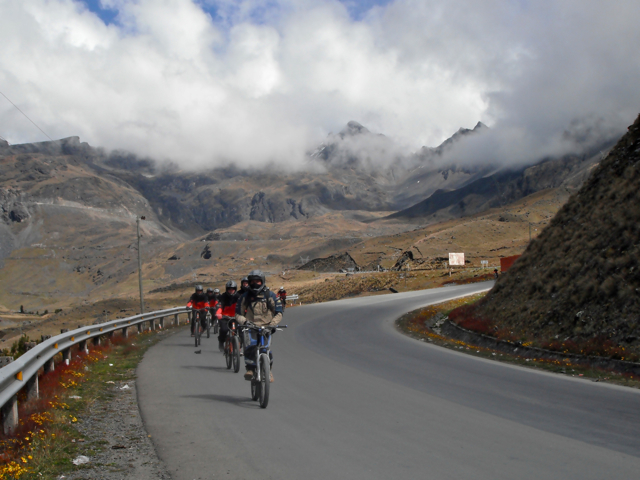
Things to do
Choose the best
There is no doubt that for such an important and risky trip, you must prepare every detail. We are talking about 4,700 meters high, so it will be an adventure full of adrenaline and excitement. You have at your disposal several companies that provide you with the best equipment for the trip. From the bicycle, knee pads, elbow pads, gloves, helmet, breakfast, to the initial transfer.
Two or three guides will accompany you along with the rest of the cyclists. These will take care of giving you the safety rules, telling the story of the place and, in time, taking away your fear a bit. Although at first, it is scary, after a while you will start to enjoy and have fun in a big way, keeping one of the best moments of your life.
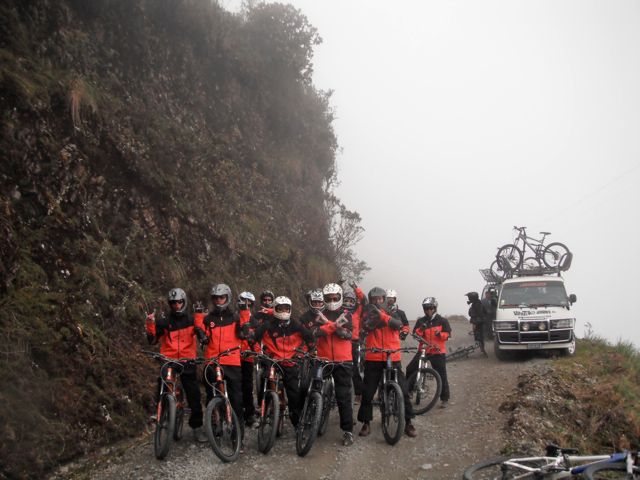
Climb the summit
A bus will take you to the top of the summit to start the long-awaited descent. After you have all your safety equipment ready, you have a moment to familiarize yourself with the bicycle and the environment, remember that you are at a considerable height and it is better that you adapt to the climate of La Paz. Then, the descent begins on a paved road, quiet at first sight. Take advantage of this quiet warming and make some stops to rest and take some pictures.
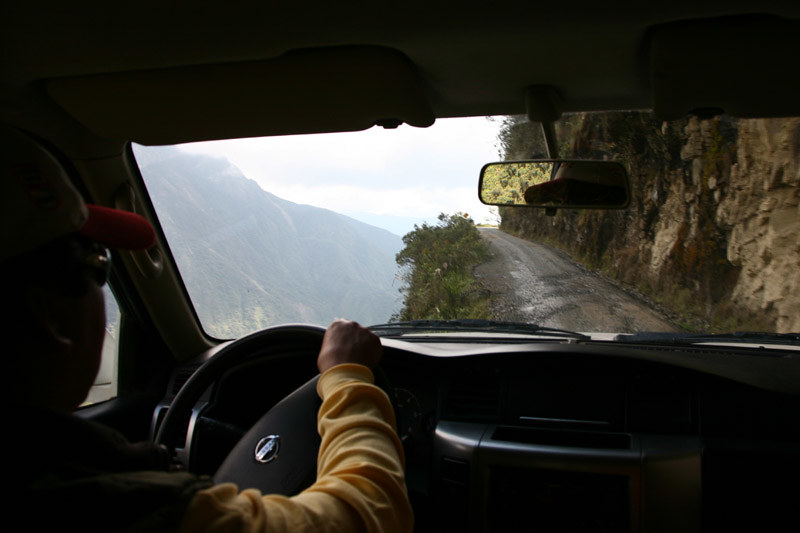
Drive to the left
Now the real adrenaline begins. The paved road ends and the dirt road begins, even narrower and with sharp bends. You will run into a sign that indicates that cyclists must remain on the left side of the road, that is, on the edge of the abyss. But do not be alarmed, although the road is narrow, a common bicycle enters very well. You should always stay on this site because cars are traveling on the right side. Also, remember to be careful with some obstacles and with the priests, for that the guide must give directions.
The most advisable thing is that when a car approaches, the cyclist stops and waits for it to pass, for more safety. On the other hand, there are some areas where there are no railings on the edge, so be careful not to slip or fall. Don’t forget to enjoy the incredible views that this wonderful place offers you. In the rest stops take the opportunity to take some photos, it is certainly an experience that is worth being portrayed
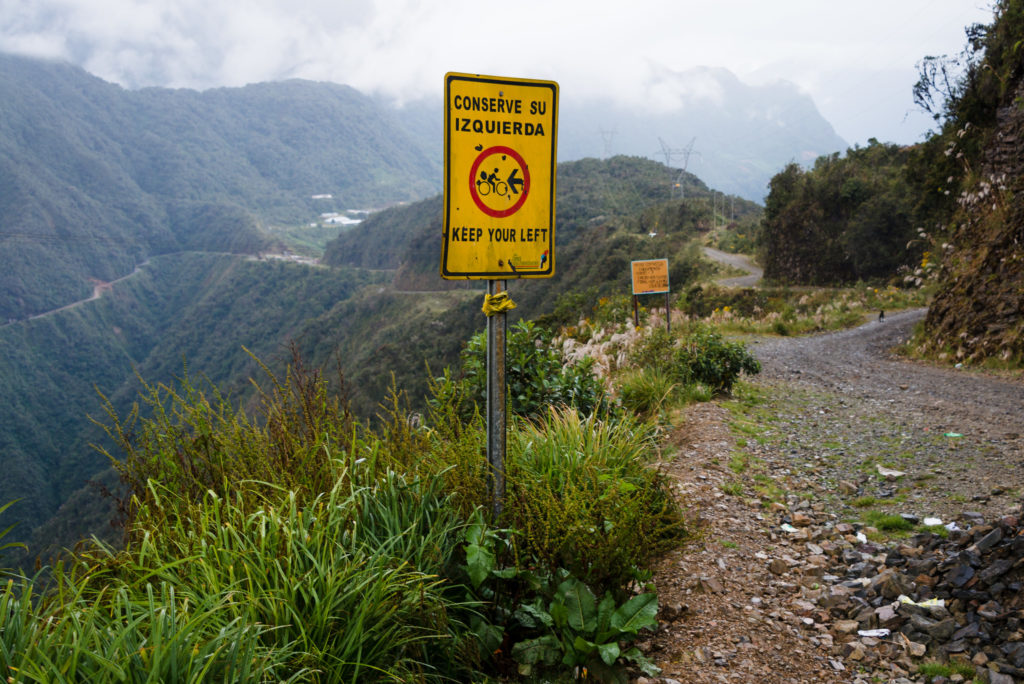
Yolosa
At the end of the tour, you will find a picturesque town. This place (which is located south of Coroico) is perfect for a well-deserved rest. In addition, here you can enjoy a delicious meal, a refreshing shower, and a good beer. On the other hand, you can also take advantage of the time and visit the La Senda Verde wildlife refuge, where you can admire more than 50 species of endangered animals and many friendly monkeys.
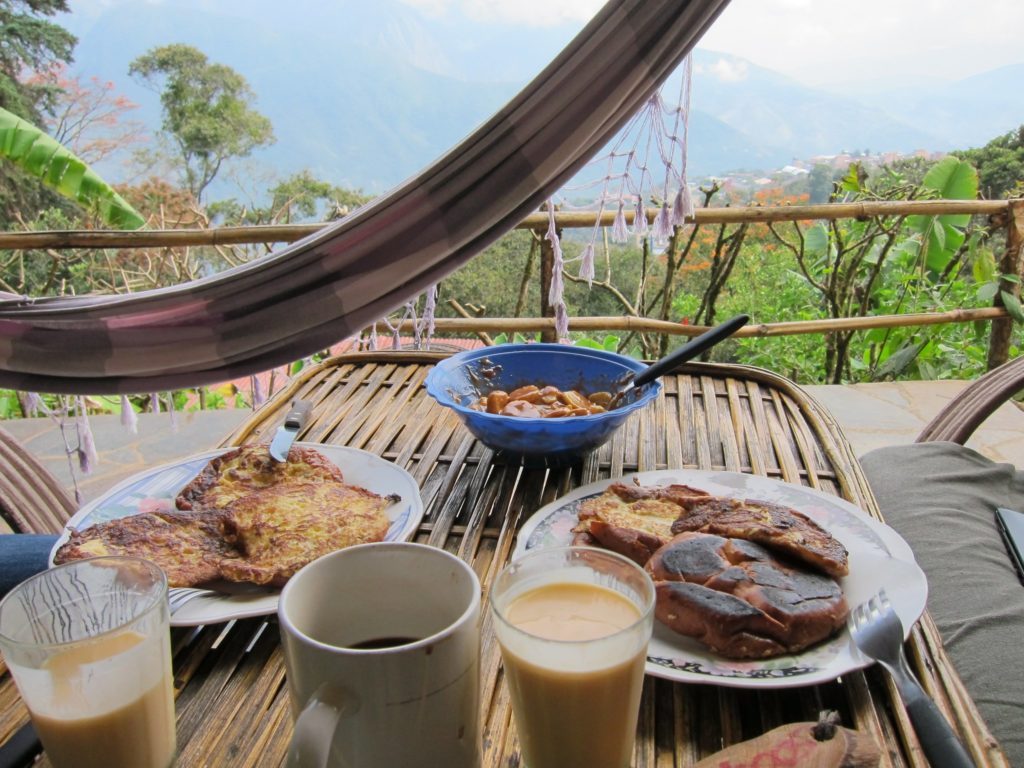
How to get there
You can get directly to La Paz Airport (LPB). It is up to the tour that you hire there will be different departure points to reach La Cumbre. In a minivan from the airport, it is approximately 2 hours to La Cumbre.
When to go
From March to October. La Paz receives its highest rainfall between November and February.
How long do I go for
The tour lasts approximately five to six hours.
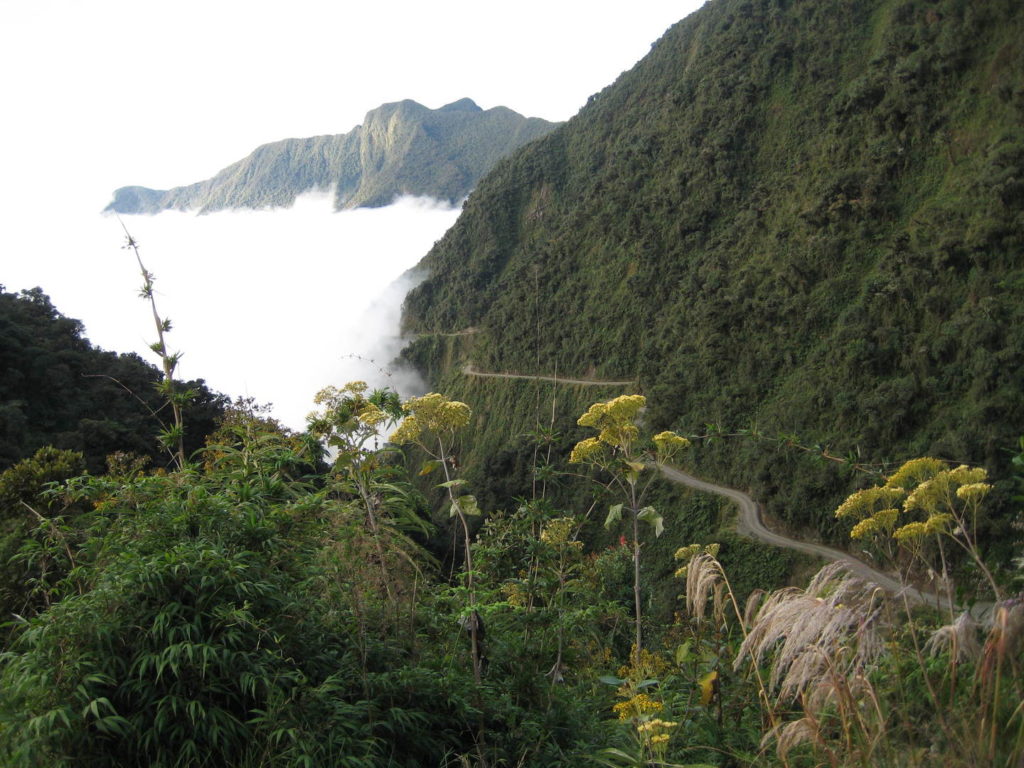
Opening and Closing Hours
The tour starts from very early. Most travel agencies pick up cyclists from 7 in the morning to prepare them with all the equipment. By 6 in the afternoon you are back to La Paz. However, these schedules may vary a bit depending on the activities of each company.
Planning
Remember to book your plane tickets in advance. In addition, you can also book the tours with some agencies online, remember that this activity is very solicited by tourists in Bolivia. On the other hand, several equipment suppliers based in La Paz take day trips on the Road of Death.
Inside Information
Take a few days to acclimatize to the altitude before attempting the expedition, remember that it can harm your health. Take some clean clothes to change at the end of the trip, the minivan of the agency that will take you to La Cumbre will stay with her and at the end, they will return it to you, so that you do not have to carry all your things on the bicycle. Then, after surviving the trip, enjoy your lunch in Coroico before the trip back to La Paz.
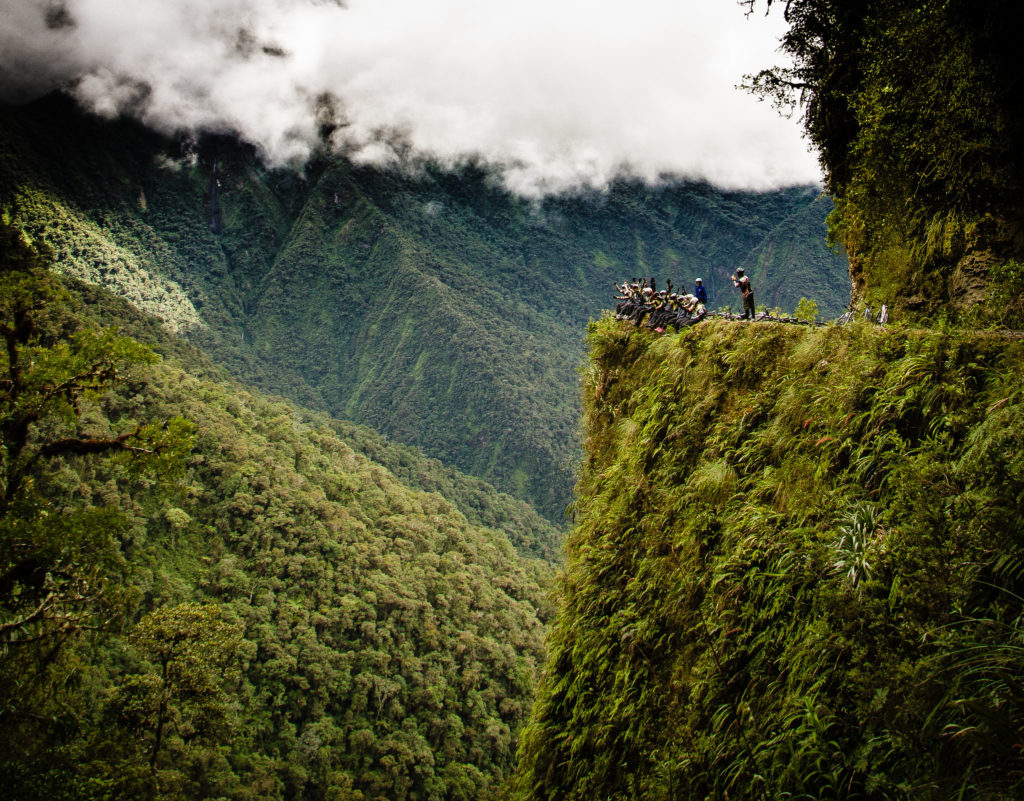
History
The road to death is named after its high mortality rate, it was cut right on the side of the Eastern Cordillera chain around 1930 by Paraguayan prisoners during the Chaco War. This place is also known as the Yungas road. In the 1950s this dangerous road was the only link between the Yungas region and La Paz. Because of this, it was very busy with buses, trucks, and cars, even at night. Many of these vehicles were unlucky in such sharp turns and fell into a vacuum, taking the lives of dozens of people.
One of the worst accidents occurred in 1994 when a bus full of people got off the road and more than 100 passengers died. On the other hand, according to studies and statistics, for a time, a driver’s life was lost every two weeks. Currently, an alternative road is built that is not so dangerous that it has 2 roads wide enough for the passage of vehicles. However, the road to death remains a challenge for thousands of tourists, backpackers, and cyclists who visit the Bolivian capital.
Websites
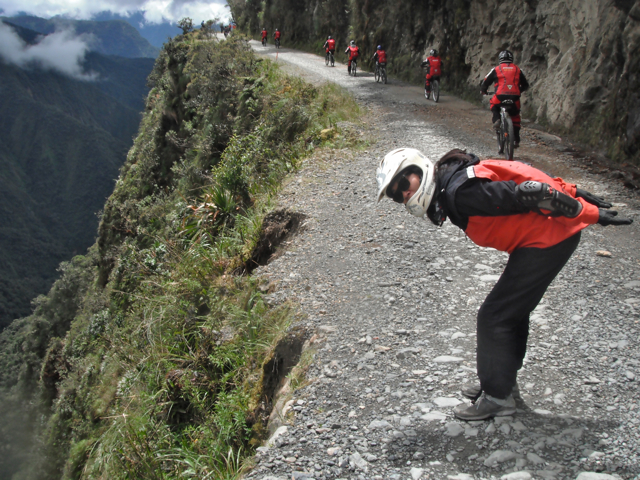
Other Nearby Attractions
Titikaka
This wonderful lake is located on the border of Bolivia and Peru, divided almost in half. It is one of the largest lakes in South America and the highest navigable lake in the world, almost 4 thousand meters above sea level. It is said that the Inca empire was born on the shore of this place, in addition to other cultures. You can not miss the opportunity to admire this wonder of nature. Its waters are characterized by being calm and crystalline. In addition, it also has ruins of the Inca empire that give the place a historical touch. Near here you can also visit the Titicaca National Reserve, it has rare species of marine animals that will surprise you.
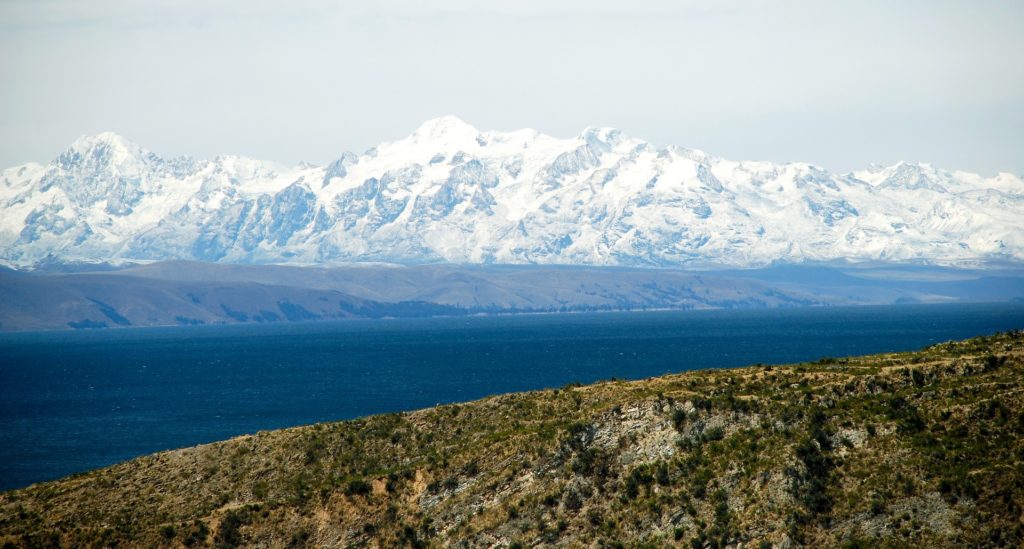
Salar de Uyuni
Just south of Bolivia is the largest and highest salt desert in the world, at 3600 meters above sea level. Without a doubt, Bolivia does not play when it refers to height. Millions of tourists visit Bolivia every year to admire the spectacle. Most arrive from the wee hours of the morning to enjoy the imposing sunrise that appears behind the salt hills. On the other hand, the best experience is when you take a 4×4 ride, you literally feel in the clouds. Many people think that this place is taken from a science fiction movie, because the panoramic views are amazing, postcards out of this world.
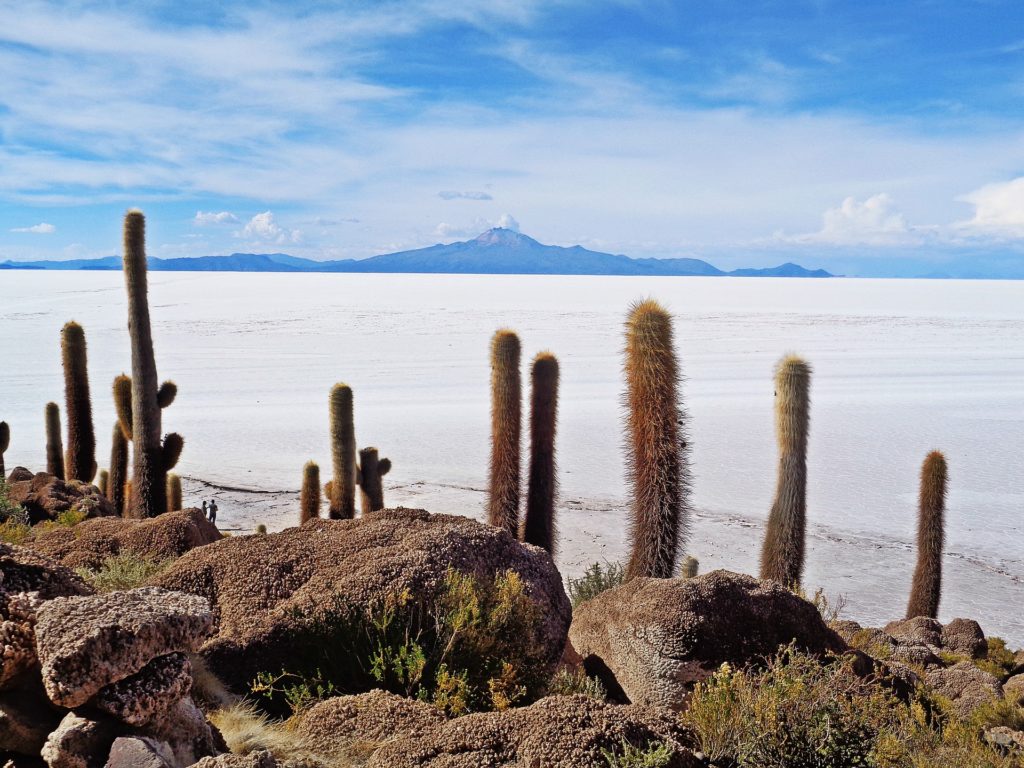
Sol del Mañana
Travel back in time to the first years of planet earth and watch it open at your feet. You will have the opportunity to admire this imposing geyser, but be careful, remember that boiling and bubbling water rises before you up to 50 meters high. At 4850 meters it is one of the highest and coldest areas in the entire country. You can hire a travel agency to take you on a tour of this place, every kilometer is worth it to enjoy this show.
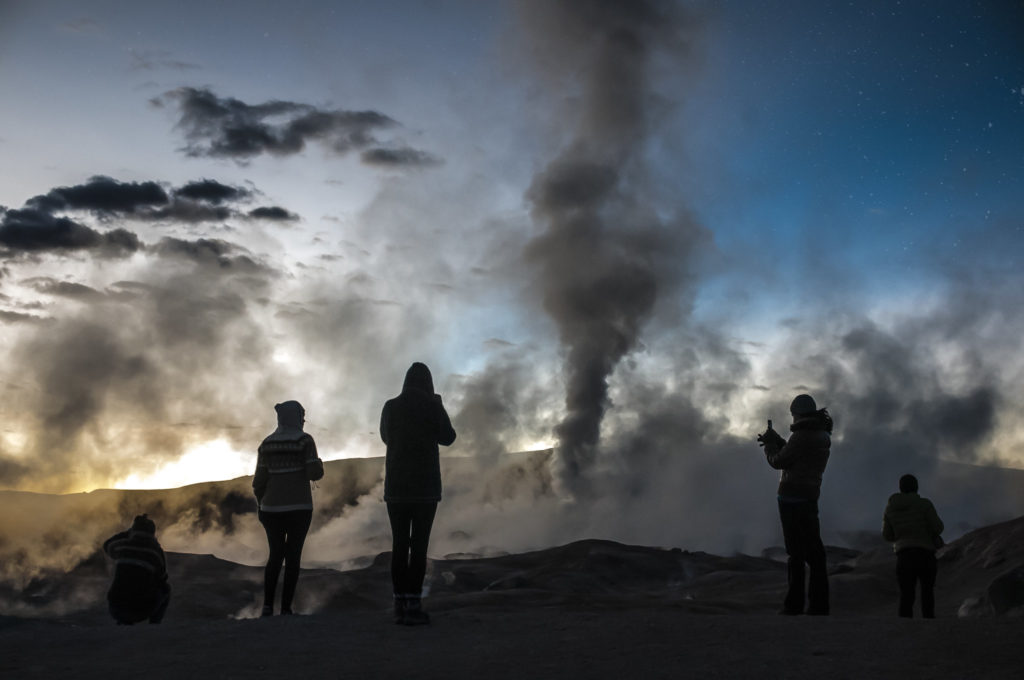
If you loved this article or found it useful, don’t forget to share it with your adventurous and travel-hacking friends! If you want more posts like this, follow us on Youtube, Instagram, Pinterest, Twitter, Facebook or Reddit and subscribe to our newsletter!

